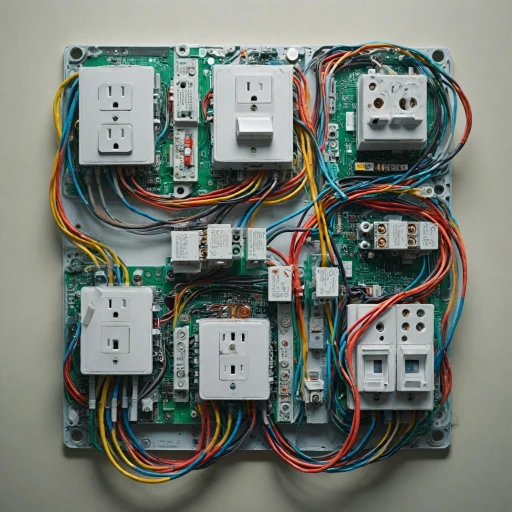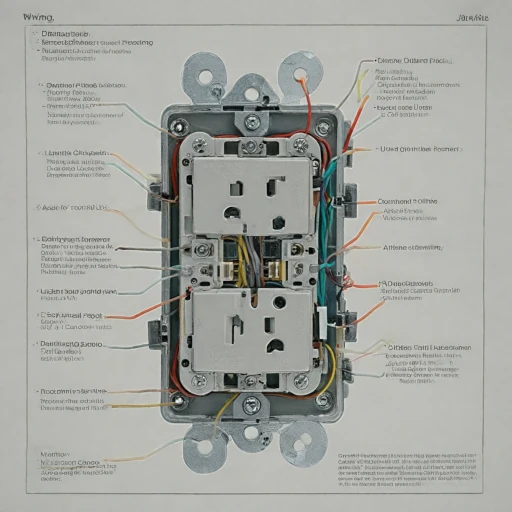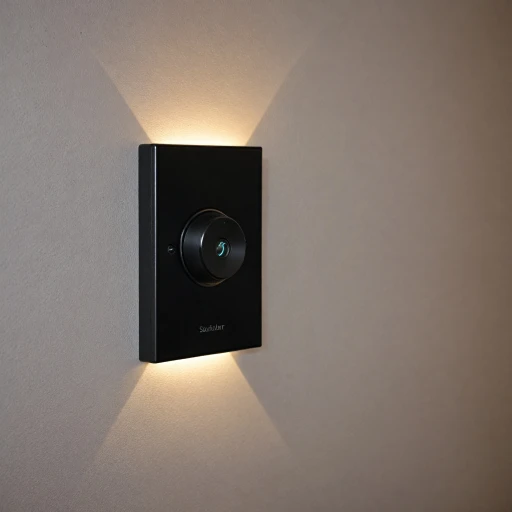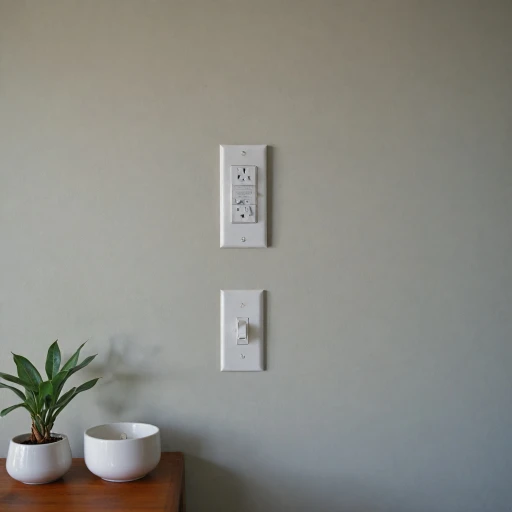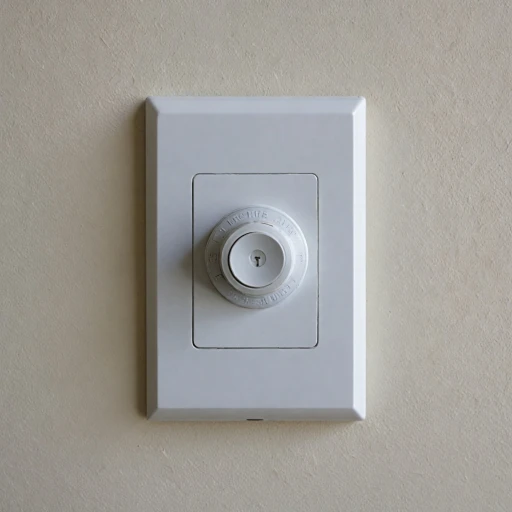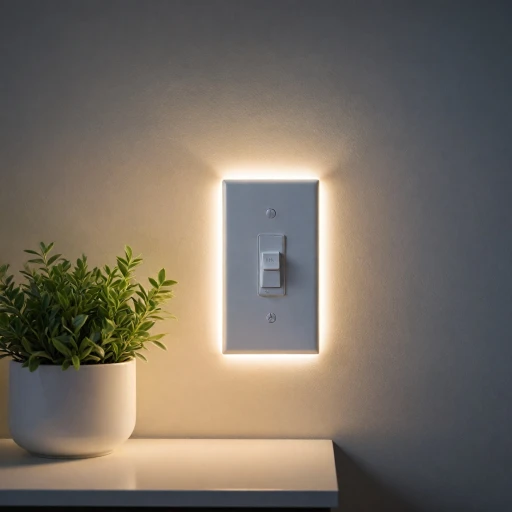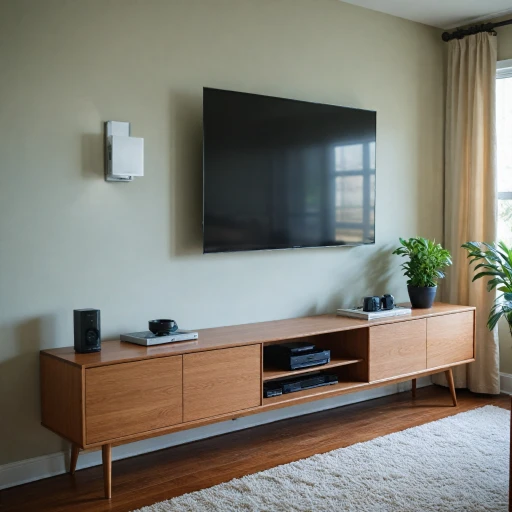
Understanding Wireless Dimmer Switches
Decoding the Wireless Dimmer Switch
In recent years, achieving the right ambience in your home has become easier with the introduction of wireless dimmer switches. These smart devices offer a modern way to control the lighting in your space without the hassle of wires, making them a popular choice for tech-savvy homeowners. The core advantage of a wireless dimmer is its ability to adjust light brightness through a simple touch or even the sound of your voice. Wireless dimmer switches function by using radio frequency (RF) or Wi-Fi technology to communicate with your light fixtures. This allows users to control their lighting remotely, whether from a dedicated remote control, a smartphone app, or a compatible smart home system like Lutron Caseta or Kasa Smart. This type of advanced functionality not only enhances the convenience factor but also integrates well with other smart light products in your home ecosystem. Notably, many dimmer switches offer compatibility with dimmable LEDs, catering to the increasing shift towards energy-efficient solutions. Popular products in this category include the Caseta Wireless Smart Lighting Dimmer Switch and the Diva Smart Dimmer Switch. These versatile options suit various home setups and preferences, elevating your lighting experience to new levels. For those seeking to understand the technical underpinnings of how these switches work, examining the wiring schematic for a 3-way dimmer switch can provide valuable insights. Understanding the intricacies of your light control can be beneficial, especially when troubleshooting or upgrading your smart lighting system. Explore more about the wiring schematic for a 3-way dimmer switch. In essence, the smart dimmer switch is more than just a product—it's a lifestyle upgrade. It brings adaptability, efficiency, and luxury to your household lighting, cementing its value in today's smart home landscape.Benefits of Using Wireless Dimmer Switches
Revolutionize Your Space with Wireless Dimmer Switches
Wireless dimmer switches are transforming homes by providing a smart and sophisticated lighting control solution. Incorporating these switches into your space allows you to adjust the brightness of your lights with ease, offering both convenience and efficiency. One of the main advantages of using wireless dimmer switches is the flexibility they offer. You can control the lighting from anywhere, using a remote or a mobile app. This is particularly useful in homes where traditional switches are inconveniently placed. With brands like Lutron and Caseta leading the way, users can experience seamless dimming functionality with products like the Diva Smart dimmer switch. Another significant benefit is energy efficiency. Smart dimmers enable you to control the brightness of your dimmable LEDs, which can lead to reduced energy consumption and lower electricity bills. Imagine adjusting the ambiance of your room with just a few taps on your smartphone, without having to worry about high energy costs. Moreover, wireless dimmers can enhance your space by offering customizable lighting settings. Whether you're hosting a dinner party or relaxing at home, you can set the perfect lighting mood. With options to switch control between different scenes, your smart light setup becomes a key element in your home’s interior design. For buyers, ensuring that the product is easy to install is crucial. Many wireless dimmer kits include necessary components, such as a smart switch kit or wall plate, and typically don’t require a neutral wire. This makes the installation process straightforward, even for those with limited technical expertise. For a more in-depth look into the advantages and potential challenges of wireless dimmers, you might find our article on exploring the benefits and challenges of wireless three-way light switches insightful. Overall, wireless dimmer switches provide an innovative way to enhance your home with smart lighting solutions. Whether you're looking for convenience, energy savings, or aesthetic improvement, these smart dimmers can significantly upgrade your living space.Installation Tips for Wireless Dimmer Switches
Getting Started with Installation
To enhance your home with a wireless dimmer switch, understanding basic installation is crucial. Before beginning the installation, ensure your home’s lighting system is compatible with your chosen smart dimmer. Most leading brands like Lutron, Caseta, and Kasa Smart offer detailed instructions and compatibility guides with their kits.Essential Tools and Precautions
When installing smart dimmer switches, having the right tools is essential. Typically, you’ll need:- Screwdrivers
- Voltage tester
- Wire connectors
Wiring Considerations
Most smart dimmers may require a neutral wire. Check your existing wiring setup to ensure you have one, as some older homes might not. If a neutral wire is absent, you might need to explore dimmers designed to work without it.Installation Steps
Here is a general guide to installing your wireless dimmer:- Turn Off Power: Double-check that the power is off using a voltage tester. Safety is paramount.
- Remove Existing Switch: Carefully unscrew the current switch and disconnect the wires.
- Connect the Smart Dimmer: Using the provided instructions and diagrams, connect the wires from the dimmer to your home’s wiring. Most products, like the Caseta and Diva Smart Dimmer, provide a straightforward wiring method.
- Secure the Dimmer: Carefully screw the dimmer into the wall box and make it flush with the wall.
- Power On and Test: Once connected, turn the power back on and test the switch control to ensure it works correctly.
Final Setup and Integration
After the hardware installation, it’s time to configure the dimmer via the dedicated app. This might include setting up dimming schedules, scenes, or integrating with popular smart home systems for remote control. For a seamless experience, most smart dimmers come with excellent apps, allowing you to control your lights with ease, providing both manual and automated options. Ensuring your dimmer is compatible with dimmable LEDs is vital for optimal performance and to avoid flickering issues. A well-completed installation and setup lead to an enhanced smart lighting experience, demonstrating the impressive benefits of smart light installations.Compatibility with Smart Home Systems
Integrating with Smart Home Ecosystems
Compatibility is paramount when selecting a wireless dimmer switch to seamlessly integrate with your existing smart home setup. These dimmers are designed to work with various smart home systems, ensuring you can control your lighting intuitively through your preferred platform. To best take advantage of a smart dimmer's capabilities, consider the following aspects:- System Alignment: Ensure the dimmer switch is compatible with major smart home systems such as Alexa, Google Assistant, or Apple HomeKit. This will allow you to control your lights through voice commands or with the corresponding mobile app for hands-free convenience.
- App Connectivity: Many smart dimmers come with their own dedicated mobile apps. These apps offer intricate control over your lighting settings, presets, and schedules. Make sure the app is user-friendly and offers the features you require to enhance your smart home experience.
- Integration Tools: Check if the dimmer switch is compatible with third-party automation platforms like IFTTT (If This Then That). This flexibility allows creating complex lighting scenarios, such as dimming your lights when your smart thermostat reads a certain temperature or when motion is detected.
- Simplicity in Setup: Consider systems like the Lutron Caséta Wireless Smart Lighting Kit, which includes everything needed for easy installation and ensures compatibility with numerous smart systems out of the box.
Troubleshooting Common Issues
Common Issues and Practical Solutions
Integrating wireless dimmer switches into your smart home system can offer unmatched convenience, but users might encounter common challenges. Addressing these issues ensures a seamless experience with your smart dimmer switches.- Connectivity Problems: Sometimes the wireless dimmer switch might not connect to the app or smart hub. Ensure that your Wi-Fi router is running on a 2.4 GHz network, as many smart dimmer products, including Lutron Caseta and Kasa Smart, are optimized for this frequency. Also, check if the switch is within range of your wireless router.
- Dimming Compatibility: Not all LED bulbs are dimmable or compatible with every dimmer switch. Using non-dimmable LEDs can result in flickering or noise. Verify that your LEDs are marked as dimmable and that they suit low voltage requirements when pairing with a Lutron or Diva smart dimmer.
- Remote Functionality Issues: If the remote control isn't working properly, check the battery and the line of sight. Ensure that there are no obstructions between the remote and the dimmer switch. Additionally, some remotes might need re-pairing with the switch control if they're unresponsive.
- Neutral Wire Requirements: Some smart dimmers require a neutral wire for proper installation. If your existing wiring lacks a neutral wire, you might need a different product or a professional electrician to help rewire your light switch setup.
- App Control Challenges: When the app doesn't reflect changes made via the switches, verify that both the app and dimmer switches are running the latest firmware. This might involve updating the software through the app or resetting the smart dimmers.
Future Trends in Smart Lighting
Smart Lighting Innovations on the Horizon
The world of smart lighting is ever-evolving, with trends that promise to redefine how we interact with light. As wireless dimmer switches continue to gain traction, several innovations are set to enhance their capabilities further. Smart switches and dimmer products like Lutron's Caseta series are not only about controlling lights, but also about creating an integrated smart home ecosystem. Here is what's on the horizon:
- Increased Compatibility: Future smart dimmer switches will likely offer enhanced compatibility with a broader range of smart home systems. This means better integration with platforms like Google Home, Amazon Alexa, and Apple HomeKit, providing seamless voice control for a more intuitive lighting experience.
- Artificial Intelligence Integration: AI capabilities are set to make smart dimmers more intuitive. Imagine your lights automatically adjusting brightness based on your past usage patterns or the time of day, creating a personalized lighting ambiance without the need for manual control.
- Energy Efficiency: Newer smart light technologies aim to improve energy consumption, making dimmers more efficient. These advancements will offer more precise dimming capabilities for LED lights, further reducing energy costs and extending bulb life.
- Advanced App Features: The smart dimmer switch apps are continually improving. Upcoming updates are likely to include more personalized settings, allowing users to create intricate lighting schedules, and even simulate occupancy when you're not home for added security.
- Remote Monitoring and Control: The ability to control and monitor your lighting remotely is here to stay, but future iterations will include enhanced sensors and analytics, providing insight into energy consumption patterns for smarter decision making.
The future of smart lighting is bright, with an endless array of possibilities on the horizon. From advanced remote control to enhanced energy-efficient solutions, smart dimmers are set to become an indispensable part of modern homes. For a detailed guide on enhancing your home lighting, check out our informative post.


